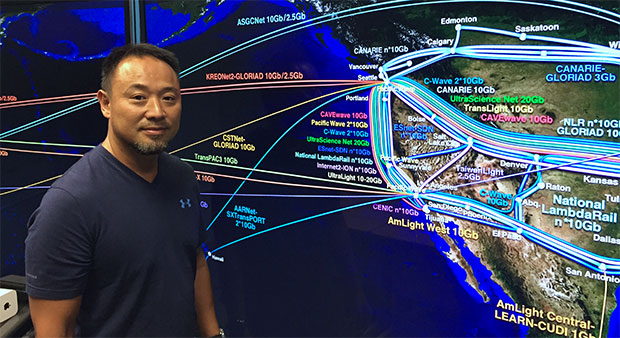NETWORKS
Leigh wins $5 million grant to improve networks

Modern science is increasingly data-driven, collaborative in nature and international. Large-scale simulations and instruments produce petabytes of data, which is subsequently analyzed by tens of thousands of scientists scattered across the globe.
The University of Hawaiʻi at Mānoa and the University of California at Davis are partnering on a project led by Indiana University to accurately understand the current use of scientific data networks, while planning for the required capacity of international network circuits.
NSF grant funds network traffic analysis
The National Science Foundation has awarded a grant of $5 million for the five-year project called NetSage. The project is an open privacy-aware network measurement analysis and visualization service designed to address the needs of today’s international networks. NetSage will monitor and visualize all the network traffic flowing over the National Science Foundation’s next generation, high-speed, international and national research networks.
Co-Principal Investigator Jason Leigh, director of the University of Hawaiʻi at Mānoa’s Laboratory for Advanced Visualization and Applications (LAVA), explained that the NetSage project is similar to an automobile traffic map that people depend on to get to work in the morning.
NetSage aids in visualizing network problems
Leigh said, “NetSage will be used to figure out whether there is congestion or outages and what the cause is, so that problems can be quickly fixed and future networks can be better planned.”
UH Mānoa’s share of the grant is $1 million over five years. Hawaiʻi’s role is to work with all the network partners around the world to visualize the international network map using the enormous amount of data that will be collected. In addition the project aims to develop the next generation of networking engineers through internship opportunities working with under-represented students in Indiana and Hawaiʻi.
NetSage was funded by the National Science Foundation Award #1540933.

